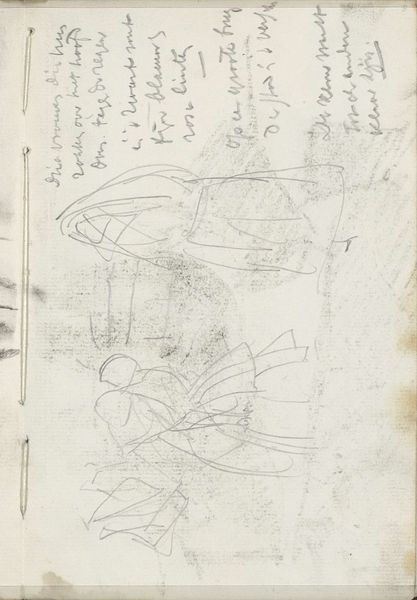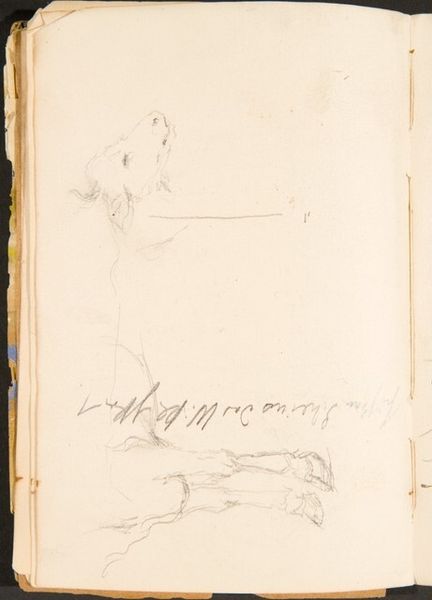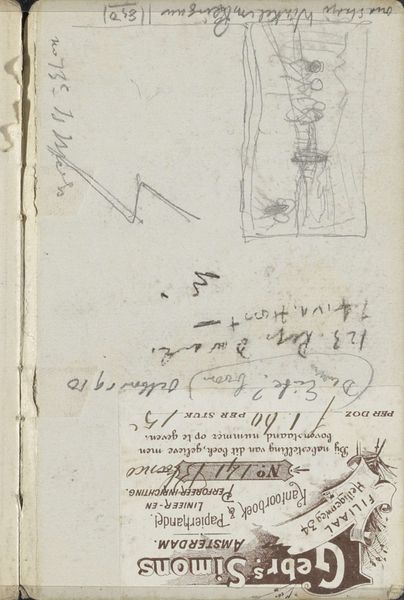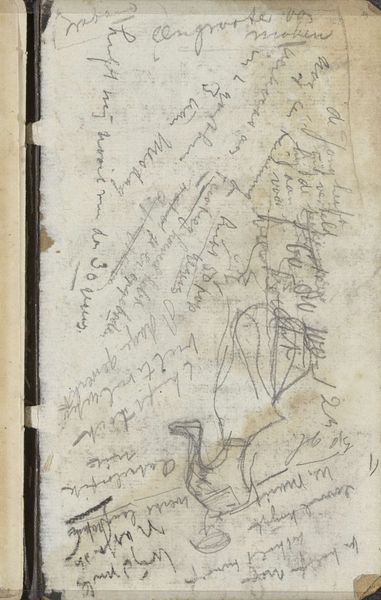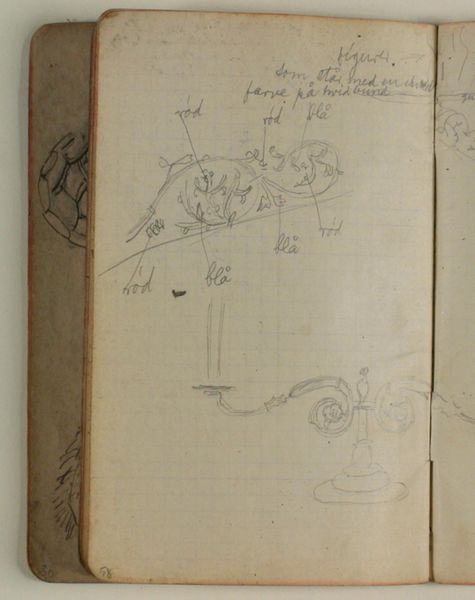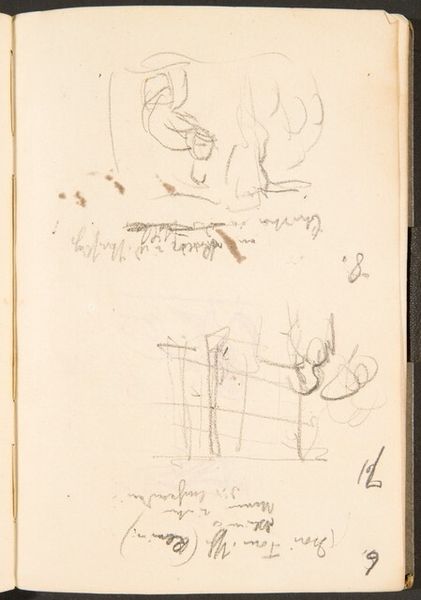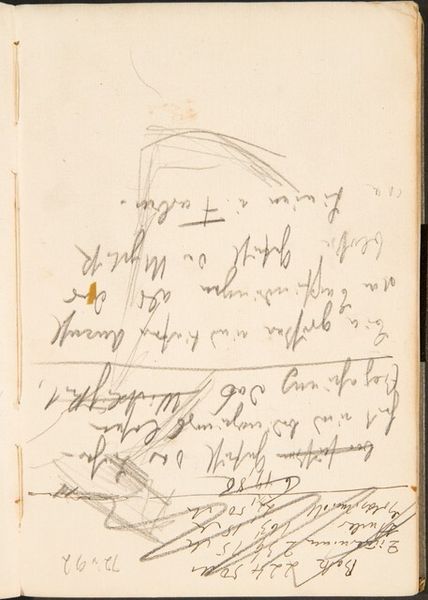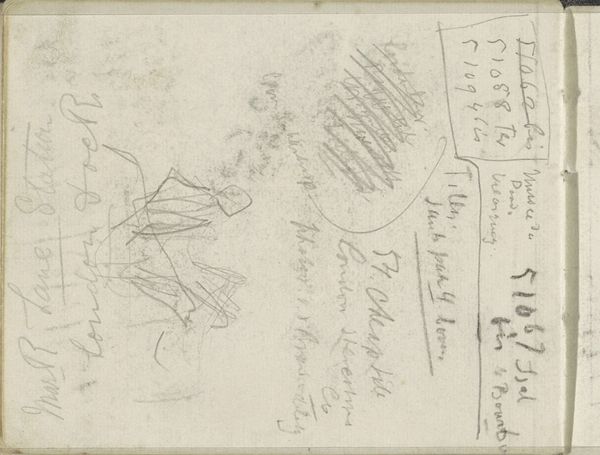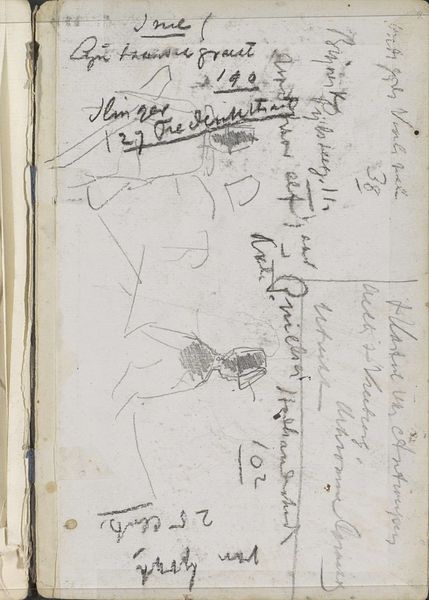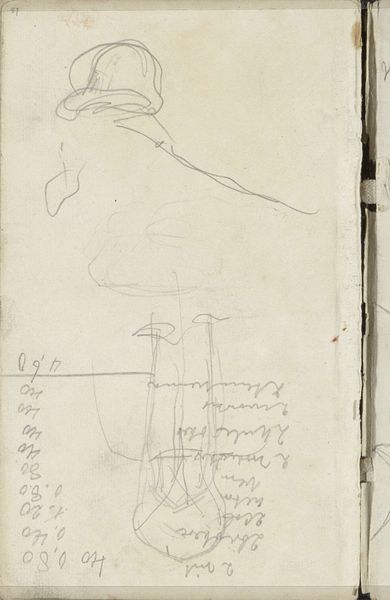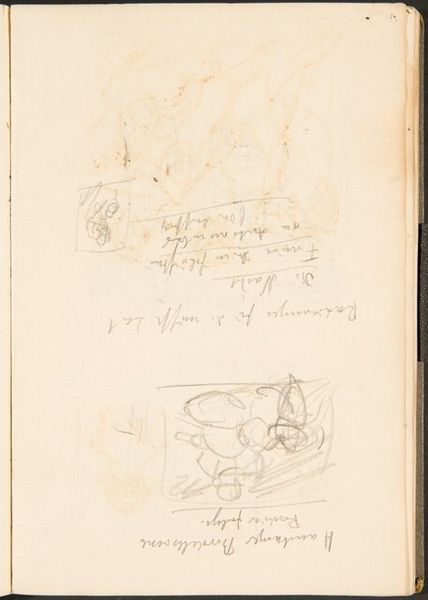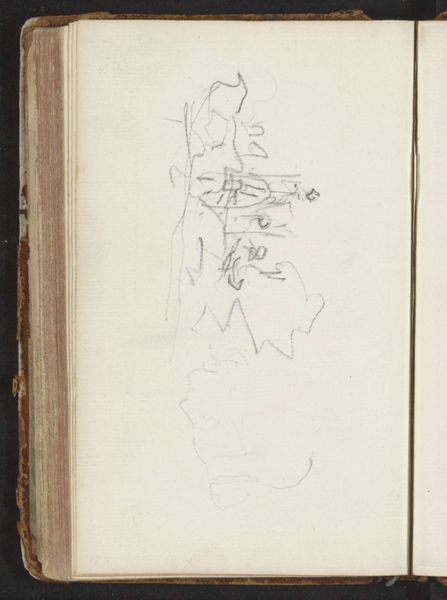![Notizen und kleine Skizze (Notations and Small Sketch) [p. 40] by Max Beckmann](/_next/image?url=https%3A%2F%2Fd2w8kbdekdi1gv.cloudfront.net%2FeyJidWNrZXQiOiAiYXJ0ZXJhLWltYWdlcy1idWNrZXQiLCAia2V5IjogImFydHdvcmtzLzU0OGM1MmEwLWQ5MTktNGM0MC1hM2ZkLWUwNDgxMTE1NGFhNS81NDhjNTJhMC1kOTE5LTRjNDAtYTNmZC1lMDQ4MTExNTRhYTVfZnVsbC5qcGciLCAiZWRpdHMiOiB7InJlc2l6ZSI6IHsid2lkdGgiOiAxOTIwLCAiaGVpZ2h0IjogMTkyMCwgImZpdCI6ICJpbnNpZGUifX19&w=1080&q=75)
drawing, paper, pencil
#
portrait
#
drawing
#
figuration
#
paper
#
pencil
#
expressionism
Copyright: National Gallery of Art: CC0 1.0
Curator: Looking at this sketchbook page, “Notizen und kleine Skizze” or "Notations and Small Sketch," we glimpse into Max Beckmann's artistic process. The raw, expressive pencil lines offer a fascinating insight into the artist's mind. Editor: It strikes me as both chaotic and intimate. There’s a frantic energy in the marks, yet the glimpses of figures and writing feel like fragments of a private world, or like memories just beyond reach. Curator: The layering of image and text, typical of Expressionist sketchbooks, presents an interplay between visual observation and the articulation of inner experience. What narratives might the combined figurative and textual elements reveal? Editor: Well, I immediately pick up on the recurring imagery—especially the figuration. The way the body language seems somewhat hunched, almost defeated. It echoes symbols of despair and the struggles in the Expressionist lexicon. Perhaps this reflects anxieties specific to Beckmann's cultural milieu? Curator: Undoubtedly, post-World War I Germany was a cauldron of social and political turmoil. Expressionism, with its emphasis on subjective experience and emotional intensity, became a powerful tool to engage with and critique societal structures and political ideologies. This page may encapsulate that historical context, revealing individual narratives woven into wider societal anxieties. Editor: Exactly! The rough pencil strokes carry a weight, as do the obscured textual notations scattered on the page. They conjure that mood of social discord that was so symptomatic of the time. The quick sketches allow one to imagine what filled his days, acting as both observations and coded signals. Curator: Thinking about it this way encourages us to ask about how these symbols of anguish are created, transmitted, and resisted within the broader culture of the era. How does this sketchbook become a site of resistance? Editor: Yes, it allows one to speculate about Beckmann's own position. Through those symbols, he makes meaning. Examining those patterns becomes essential for connecting this intimate moment with cultural identity during interwar Germany. Curator: Considering these cultural tensions is necessary to fully understand both the emotional charge and social implications embodied within this expressive piece. It really underlines how art operates as both a mirror and a hammer. Editor: Indeed, art's capacity to record, comment upon, and intervene in social discourses is certainly what this piece embodies.
Comments
No comments
Be the first to comment and join the conversation on the ultimate creative platform.
